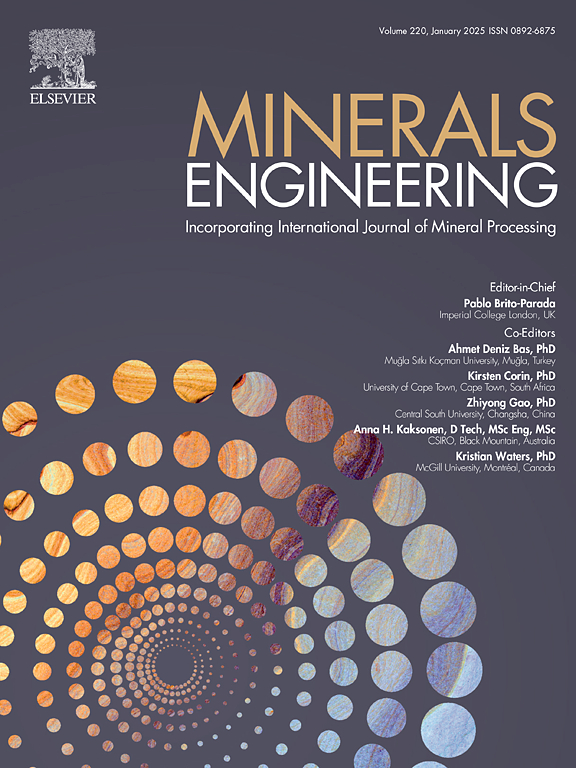Effects of different fluid inclusions content on flotation behavior of quartz particles and its mechanism
IF 4.9
2区 工程技术
Q1 ENGINEERING, CHEMICAL
引用次数: 0
Abstract
The content of fluid inclusions in quartz particles varies within the same ore deposit. Utilizing the DECA (Double Extreme Case Analysis) methodology developed by the research team, quartz particles were classified into three distinct categories based on fluid inclusion content: transparent particles (TT), non-transparent particles (NT), and semitransparent particles (ST). Systematic investigation of collection efficiency and adsorption mechanisms was conducted through flotation experiments combined with advanced analytical techniques, including XRD, ICP-MS, FTIR, XPS and zeta potential analysis. Using hydrofluoric acid (HF) as a pH regulator, a mixed collector system comprising an anionic collector (AQY) and a cationic collector (CQY) achieved effective separation of quartz sand particles with varying fluid inclusion contents at pH 2. Compared to mixed minerals, the proportion of TT in the sink product increased from 48% to 70%, an increase of 22 percentage points. The proportion of NT decreased from 12% to 5%, with a removal rate of 58.33%. FTIR and XPS results revealed that when AQY collector was added alone, it could adsorb on activated S3 (NT) surface but hardly detected on S1 (TT) surface at pH 2. However, they all were found on both TT and NT surface when mixed AQY/CQY collectors were introduced as collectors. Notably, zeta potential and contact angle measurements revealed stronger adsorption affinity of the mixed collectors toward NT surfaces compared to TT surfaces. Based on these findings, a synergistic adsorption model for the AQY/CQY system was established.
求助全文
约1分钟内获得全文
求助全文
来源期刊

Minerals Engineering
工程技术-工程:化工
CiteScore
8.70
自引率
18.80%
发文量
519
审稿时长
81 days
期刊介绍:
The purpose of the journal is to provide for the rapid publication of topical papers featuring the latest developments in the allied fields of mineral processing and extractive metallurgy. Its wide ranging coverage of research and practical (operating) topics includes physical separation methods, such as comminution, flotation concentration and dewatering, chemical methods such as bio-, hydro-, and electro-metallurgy, analytical techniques, process control, simulation and instrumentation, and mineralogical aspects of processing. Environmental issues, particularly those pertaining to sustainable development, will also be strongly covered.
 求助内容:
求助内容: 应助结果提醒方式:
应助结果提醒方式:


